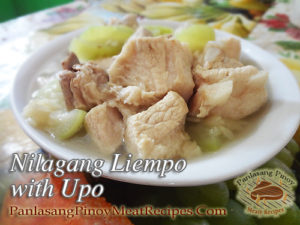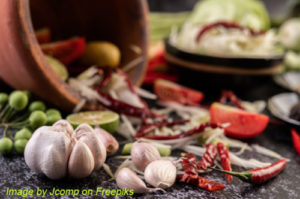Ginisang pechay with giniling is a simple leafy vegetable dish made from sauteed pechay and pork. There are many Filipino dishes that contains pechay as one of the main vegetable ingredient. For example, in nilagang baka or nilagang baboy, pechay is the leafy vegetable that distinguishes this dish from other dishes. Although it can be substituted with other vegetable such as bok choy, still pechay is the most prefered.
Anyway you can substitute this ginisang pechay recipe with bok choy because they are almost identical. The only difference is that the stem of bok choy is green and wider while on pechay it is white and thinner. You can also have a choice on using pork. Either sliced pork belly or ground pork can be used depending on your preference and availability.
Ginisang Pechay with Giniling: A Comforting Taste of Home
Whenever I think of ginisang pechay with giniling, I’m transported back to my childhood home in Laguna, where my Tita Lilia would whip up this hearty dish on lazy Sunday afternoons. The aroma of sautéed garlic, onions, and tomatoes filling the kitchen was our family’s cue that a comforting meal was just minutes away. Simple yet packed with flavor, this dish has remained a staple in our household, and every spoonful brings with it a warm sense of nostalgia.
For many Filipino families, ginisang pechay—whether with ground pork or sliced pork belly—is more than just a quick weekday meal. It’s a symbol of resourcefulness and tradition, a dish that adapts to whatever is available yet always manages to satisfy.
Pechay: A Quintessential Filipino Green
Pechay, also known as Chinese cabbage in English, holds a special place in Filipino cuisine. Whether it’s the star of a dish like nilagang baka or adobong pechay, or a simple side to accompany a heavier main course, this leafy green is beloved for its mild flavor and versatility. Pechay has been cultivated in the Philippines for centuries, thriving in our tropical climate and lending itself to countless recipes across generations.
This humble vegetable shines as it absorbs the savory essence of ground pork, tomatoes, and fish sauce. Although bok choy—a close relative—can be used as a substitute, I always prefer pechay for its crisp white stems and tender green leaves that soak up flavors beautifully. My Lolo Nestor would often insist, “Pechay lang ang kailangan diyan, para malasahan mo ‘yung totoong lutong bahay.” (Pechay is all you need to taste real home-cooked flavor.)
The Secret to Perfect Sautéing of Ginisang Pechay with Giniling
The key to a delicious ginisang pechay with giniling lies in the sautéing process. Sautéing garlic, onions, and tomatoes until fragrant and soft is a technique my Nanay taught me early on. She always stressed the importance of patience at this stage: “Kapag nauna ang lasa ng bawang at kamatis, siguradong malasa ang ulam mo.” (If the flavors of garlic and tomatoes come through first, your dish will be flavorful.)
This base creates a rich umami profile that enhances the overall taste of the dish. The ground pork is then added and sautéed until lightly browned, allowing it to absorb the aromatics before adding fish sauce for that signature salty tang.
Fish sauce, or patis, is a quintessential Filipino seasoning. Its pungent aroma might be strong, but once it melds with the other ingredients, it deepens the flavor and gives the dish that unmistakable Filipino character. Just a tablespoon is enough to season the dish, but it’s this small touch that makes all the difference.
Ground Pork: The Versatile Protein
While ginisang pechay can be made with sliced pork belly, using ground pork makes it quicker to cook and easier to infuse with flavor. My Kuya Jun, who’s always been a fan of quick and hearty meals, swears by using ground pork for a smoother, more cohesive texture.
The ground pork simmers gently in a bit of water, allowing it to turn tender and juicy. The addition of freshly cracked black pepper balances out the salty notes from the fish sauce and gives the dish a subtle kick of spice. This simmering process not only softens the pork but also creates a light, savory broth that coats the pechay perfectly.
The Final Touch: Perfectly Cooked Pechay
The beauty of sautéed pechay is in its simplicity. Once the pork is tender, the pechay is added at the very last minute. The trick here is to cook the leaves just long enough for them to wilt slightly without losing their crispness. My Ate Mila always covers the pan after adding the pechay, letting the steam do its magic. After turning off the heat, she lets it sit for a few minutes to allow the residual warmth to finish cooking the greens.
This technique keeps the pechay vibrant and prevents it from becoming soggy. As a result, you get a dish where the pechay is tender yet retains a slight crunch, pairing wonderfully with the savory pork and broth.
A Dish Rooted in Tradition
For beginners looking to try their hand at Filipino cooking, ginisang pechay with giniling is an ideal starting point. It’s forgiving, fast, and requires just a handful of ingredients that you probably already have in your kitchen. Plus, it’s one of those dishes that instantly feels like home—whether you grew up in the bustling streets of Manila or the quiet barrios of the provinces.
Whenever I serve this dish to friends or family, I’m reminded of how food can connect us to our roots. It’s more than just a meal—it’s a story of resilience, love, and the simple joys of sharing good food with those you care about. So, the next time you’re craving something hearty and comforting, give ginisang pechay with giniling a try. Your taste buds—and your heart—will thank you.
How to Cook Ginisang Pechay with Giniling
Ingredients
- 1/2 kilo pechay chopped
- 1/4 kilo ground pork
- 1 pc tomato diced
- 1 pc red onion chopped
- 2 Tbsp. fish sauce
- 1 Tbsp. cooking oil
- 1 tsp. garlic
- 1 cup water
Instructions
How to cook Ginisang Pechay with Pork Giniling:
- Heat cooking oil in a pan and saute garlic, tomato and onion until the onion and tomato is soft.
- Add in the ground pork and saute for 5 minutes. Then pour fish sauce and pepper. Pour the water and bring to a boil. Simmer for 10 minutes or until the pork is tender.
- Add in the pechay and cover. Cook for a 30 seconds and turn off heat. Then let is stand for another 5 minutes before serving.
Notes
Cooking Tips:
Choose Fresh Pechay:
When preparing Chinese cabbage, selecting fresh pechay is crucial. Look for pechay with crisp, vibrant green leaves and firm, white stems. Avoid wilted or discolored pechay, as it may affect the overall taste and texture of the dish.Sauté Aromatics to Perfection:
To enhance the flavor of your veggie dish, take your time when sautéing the garlic, tomato, and onion. Sauté until the onion becomes soft and translucent, releasing their aromatic flavors, as this creates a solid foundation for the dish's taste.Avoid Overcooking the Pechay:
Pechay cooks quickly, so it's essential to avoid overcooking it to retain its vibrant color and crisp texture. After adding the pechay to the pan, cook it for only about 30 seconds, and then turn off the heat, allowing the residual heat to wilt the pechay to perfection without making it soggy.





